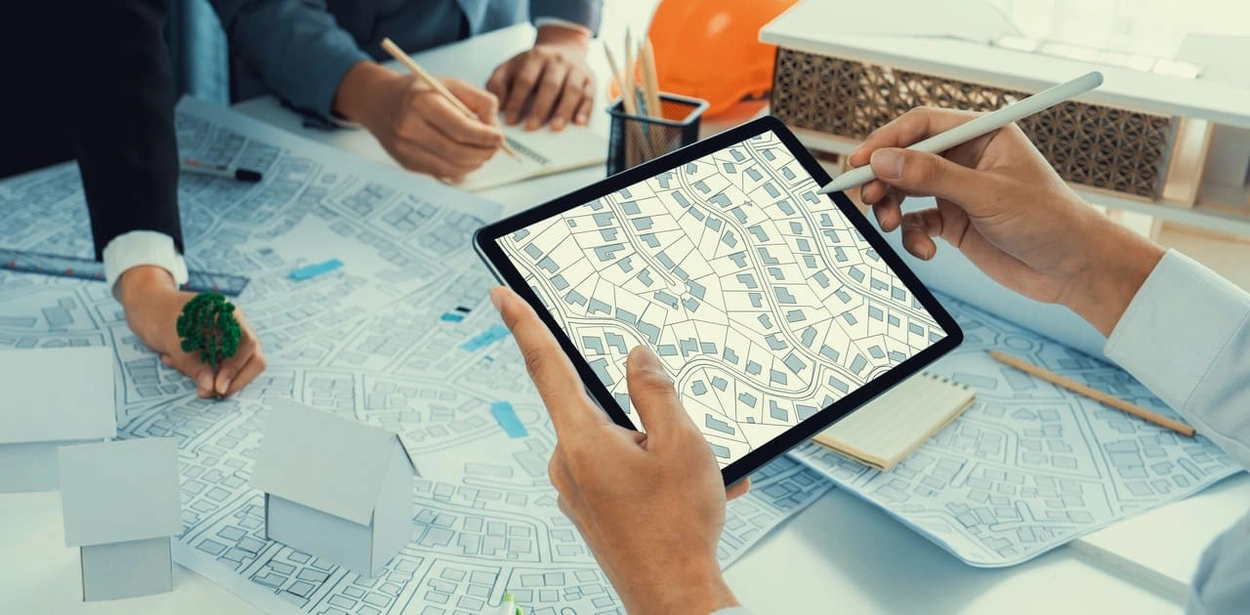Blog
Top 6 Applications of GIS in Urban Planning

Technical Printing
|29 Aug 2024
Geographic Information Systems (GIS) offer powerful tools to analyse, visualise, and manage spatial data, making them indispensable in urban planning. As urban areas expand and evolve, GIS technology makes it possible for planners to make informed decisions to develop the infrastructure for sustainable, efficient, and resilient cities. This article examines the top six reasons for the application of GIS in urban planning. Explore how GIS enhances the decision-making process to transform the way cities are planned and managed.
The Role of GIS in Urban Planning and Management
The Philippines is one of the fastest urbanising countries in the world, with 47% of the population living in urban areas. Rapid urbanisation brings about opportunities, but the related growth can also lead to challenges. Using GIS in urban planning helps planners address potential challenges while meeting demands for rapid growth and urbanisation. Geographic Information Systems are developed with a set of features that use various types of data to help city planners make informed decisions to identify the needs and challenges related to developing efficient cities.
Enhancing Spatial Analysis for Better Decision-Making
Optimising Resource Allocation and Infrastructure Development
Improving Urban Design and Planning Efficiency
Key Applications of GIS in Urban Planning

The application of GIS in urban planning integrates data from multiple sources to incorporate landscape, population, demographic, socioeconomic, and other information. The data support these six applications in urban planning.
1. Land Use Planning and Zoning
2. Transportation and Infrastructure Planning
3. Environmental Impact Assessment
4. Disaster Management and Risk Assessment
5. Community Engagement and Public Participation
6. Smart City Development
Benefits of Integrating GIS in Urban Planning and Management
Integrating GIS in urban planning provides data to accurately inform planners which structures will best serve local residents and employees. The use of accurate data improves efficiency during planning and development. It also helps urban planners develop sustainable cities that better serve the public with continued growth.
The top benefits of integrating GIS in urban planning and management include:
- The ability to gather spatial data from varied sources
- Printable data to improve communication and collaboration
- Measurable data improves the accuracy and efficiency of decision-making
- Population data can be used to ensure adequate infrastructure
- Use in environmental impact assessments to improve sustainable building practices
The Future of GIS in Urban Planning
Architects use plotter printers to produce high-quality large format prints of spatial data to make the information easier to understand. Findings from the data can then be shared with city planners and stakeholders to inform decisions regarding urban planning and future management. As technology continues to evolve, GIS and plotter printers are likely to be used in conjunction with other visualisation technologies to further enhance urban planning. For example, when combined with augmented reality or interactive displays, users can add greater depth to the visualisations provided by GIS.
With a wide range of technical printer/plotters ideal for use in the AEC industry, HP is the optimal source for a plotter/printer that will fit the needs of your application of GIS in urban planning and management. Reach out to us to learn more about how our technology can help you address challenges related to rapid urbanisation.
Download our eBook now and discover how innovation is streamlining workflows, producing prints of unmatched quality and increasing IT efficiency like never before.
<iframe src="undefined"></iframe>You Might Also Like

Top 5 Printers for Artists: High-Quality Prints for Fine Art

What Is a Wide Format Printer?: A Beginner’s Guide to Large-Scale Printing

Preparing Files for Large Format Printing: A Step-by-Step Guide

How to Use Large Format Plotters for Facility Management Floorplans

Common Mistakes & Fixes for Poor-Quality Blueprints

Common Print File Types for Blueprints Explained

Common Printing Mistakes: How to Avoid Costly Errors in Large Format Jobs
Best Printers for Illustration Prints: Top Picks for Artists and Designers

Digital vs. Paper: When to Print Architectural Drawings and When to Share Digitally

Best Practices for Marking Up and Revising Printed Architectural Plans

3 Keys to Print Emergency Maps That Enhance Disaster Response

5 Pro Tips for Mastering Wide Format Printing for AECs

Top 5 Large Photo Printers for Professional Artists and Photographers

The Complete Guide to Large Format Printing for AEC Professionals

Options for Upgrading Your Plotter

3 Best Practices for Large Document Conversion for Print

Understanding As-Built Drawings and Why They Matter

3 Ways Large Format Plotters Streamline Construction Submittals

How AI Enhances Large Format Printing for AEC

How to Optimise Hybrid AEC Printing Workflows With Large Format Printers
Select Your Country/Region and Language
Close Country/Region Selector Dialog- Africa
- Afrique
- België
- Belgique
- Česká republika
- Danmark
- Deutschland
- Eesti
- España
- France
- Hrvatska
- Ireland
- Italia
- Latvija
- Lietuva
- Magyarország
- Middle East
- Nederland
- Nigeria
- Norge
- Österreich
- Polska
- Portugal
- România
- Saudi Arabia
- Slovenija
- Slovensko
- South Africa
- Suisse
- Suomi
- Sverige
- Switzerland
- Türkiye
- United Kingdom
- Ελλάδα
- България
- Казахстан
- Србија
- Україна
- ישראל
- الشرق الأوسط
- المملكة العربية السعودية
HP Worldwide
Select Your Country/Region and Language
- Africa
- Afrique
- América Central
- Argentina
- Asia Pacific
- Australia
- Bangladesh
- België
- Belgique
- Bolivia
- Brasil
- Canada
- Canada - Français
- Caribbean
- Česká republika
- Chile
- Colombia
- Danmark
- Deutschland
- Ecuador
- Eesti
- España
- France
- Hong Kong SAR
- Hrvatska
- India
- Indonesia
- Ireland
- Italia
- Latvija
- Lietuva
- Magyarország
- Malaysia
- México
- Middle East
- Nederland
- New Zealand
- Nigeria
- Norge
- Österreich
- Pakistan
- Paraguay
- Perú
- Philippines
- Polska
- Portugal
- Puerto Rico
- România
- Saudi Arabia
- Singapore
- Slovenija
- Slovensko
- South Africa
- Sri Lanka
- Suisse
- Suomi
- Sverige
- Switzerland
- Türkiye
- United Kingdom
- United States
- Uruguay
- Venezuela
- Việt Nam
- Ελλάδα
- България
- Казахстан
- Србија
- Україна
- ישראל
- الشرق الأوسط
- المملكة العربية السعودية
- ไทย
- 中华人民共和国
- 臺灣 地區
- 日本
- 香港特別行政區
- 한국
- Recalls |
- Product recycling |
- Accessibility |
- Modern Slavery Act Statement |
- HP UK Gender Pay Gap Report |
- Privacy |
- Use of cookies |
- Personal data rights |
- Terms of use |
- Consumer legal guarantee |
- Company details |
- Limited warranty statement |
©2025 HP Development Company, L.P. The information contained herein is subject to change without notice.




